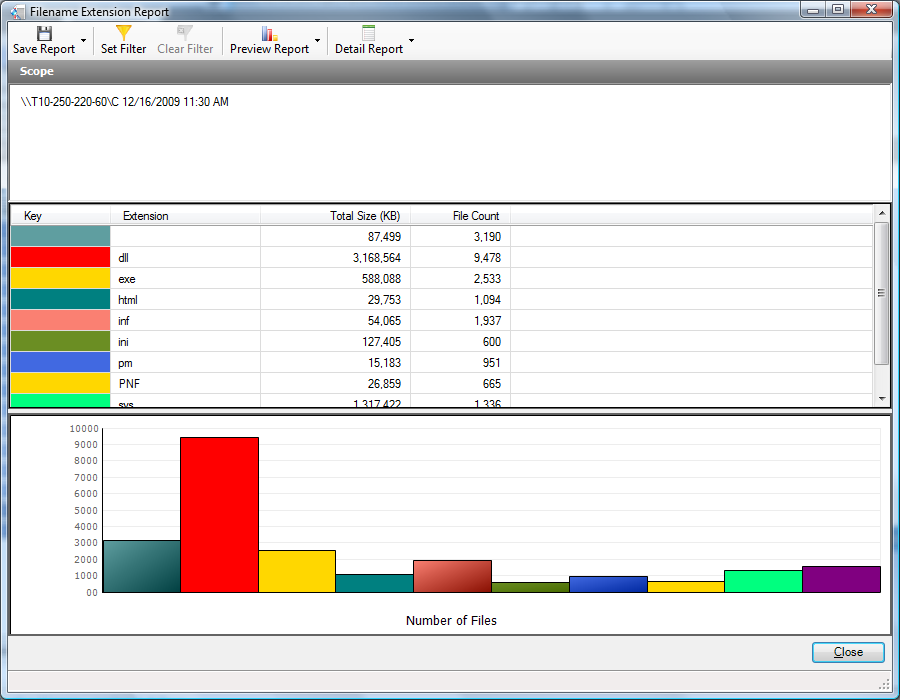5.4 Manually Creating Single Storage Resource Reports
An optimum Novell File Reporter configuration includes the setup for automated reports that are both scheduled and triggered. However, there will be times when you want to generate reports manually. For example:
-
To verify that certain files have been moved or deleted
-
To view data that is presented differently from the data in the regularly scheduled reports that you run
-
To view all files owned by a particular employee who is leaving the company
Creating a report for a single storage resource manually is as easy as selecting the scan and selecting the report type you want.
-
Launch NFRAdmin.
-
In the Scans region of the NFRAdmin interface, browse down to the level of the file system that you want to include in the report, right-click the scan, folder, or subfolder and select the report type you want to generate.
A report-specific dialog box appears with applicable additional criteria and report generation options.
-
(Conditional) If there are additional criteria to specify for the report, select them in the Additional Criteria region of the dialog box.
The Access Data Age Report, Duplicate File Report, Modification Date Age Report, and Storage Cost Report dialog boxes each have Additional Criteria specifications to indicate.
-
Click . In the Filter Settings dialog box that appears, specify your filter parameters or open a saved filter through .
You can also modify a saved filter with new parameters in the dialog box, but these new parameters are not saved unless you save them through .
-
Click to close the Filter Settings dialog box.
-
Do one of the following:
-
Click > .
-
Click > .
The report is generated and presented.

If you chose to present the report in Detail, you can change the presentation order of a particular column in the upper pane of the report by clicking the column heading. Additionally, you can double-click one of the entries in the upper pane to see more detailed information on that highlighted item in the lower pane.
Because the detailed information in the bottom pane can contain huge numbers of records (potentially millions), the bottom pane initially displays the first 1000 detail elements. If you want to see more than this, scroll down in the list and the other elements are retrieved.
-
-
(Optional) Save the report.
For an explanation of report saving options see Section 5.5, Saving Reports.